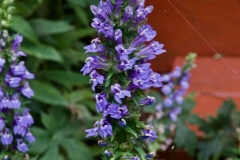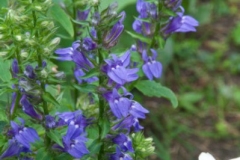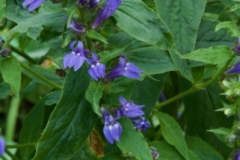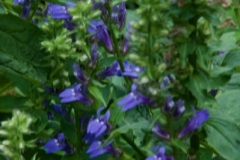great blue lobelia
Lobelia siphilitica
Description:
Sometimes called blue cardinal flower, great blue lobelia likes full sun but will tolerate partial shade. Plants grow from 1′-4′ tall. Blooms with multiples flowers on a single stalk from mid summer through fall. It wants medium to moist soil and does not tolerate drought. Often found in ditches or on wetland fens. Once established lobelia can form large patches. Each plant is a short lived perennial (with each plant living for only a few years).
Growing:
Great lobelia likes rich moist soils with plenty of humus. Plants can be divided in the early spring. Plants will grow from seed if given good growing conditions.
Warning:
All parts are poisonous. Toxic only if eaten in large quantities. Symptoms include nausea, vomiting, diarrhea, salivation, exhaustion and weakness, dilation of pupils, convulsions, and coma. Toxic Principle: Alkaloids lobelamine, lobeline, and others, plus a volatile oil. (Poisonous Plants of N.C.)
Details:
great blue lobelia
Locations:
WisFlora Database detailed list of herbarium samples collected across Wisconsin including the location of each.
References:
USDA Plants Database
Wisconsin Virtual Flora Database
Lady Bird Johnson Wildflower Center




